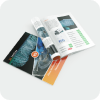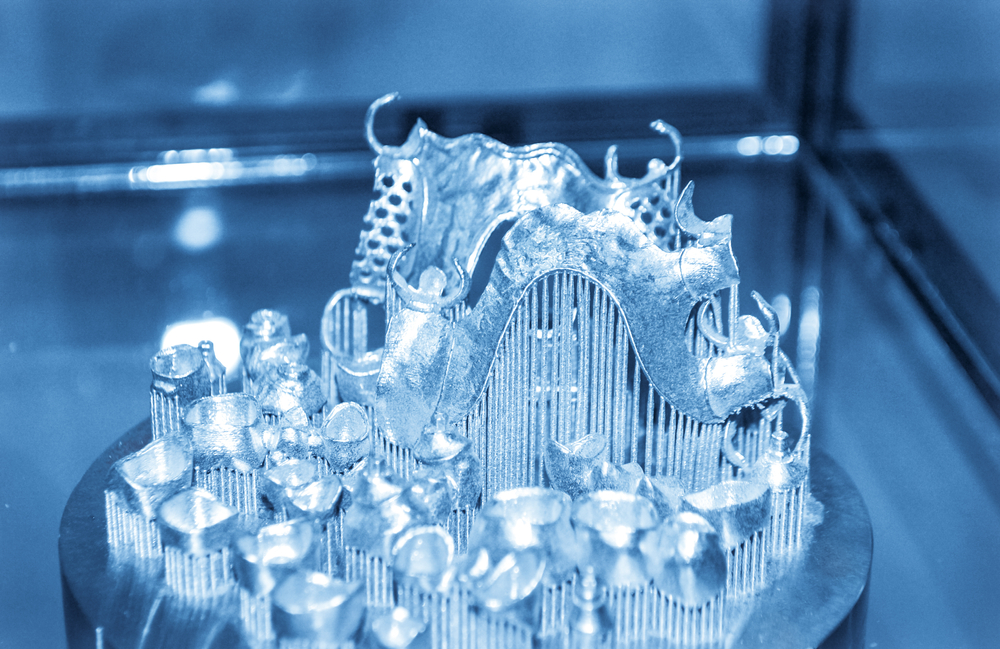
SLA vs. DLP 3D Printing
In the past, picking a 3D printer was as easy as buying a fused deposition modeling (FDM) printer and spinning it up on your desk. Today, the 3D printing field has advanced in accuracy, product complexity, and the number of available processes. Companies can scale the production of complex products to high volume using two processes: stereolithography (SLA) and digital light processing (DLP).
Both are optical processes that work with a range of photosensitive materials. Each process provides some advantages for fabricating different types of products, and choosing between SLA vs. DLP can be difficult without hands-on experience. The right 3D printing technology partner can help determine the best process and ensure production runs will have a high yield.
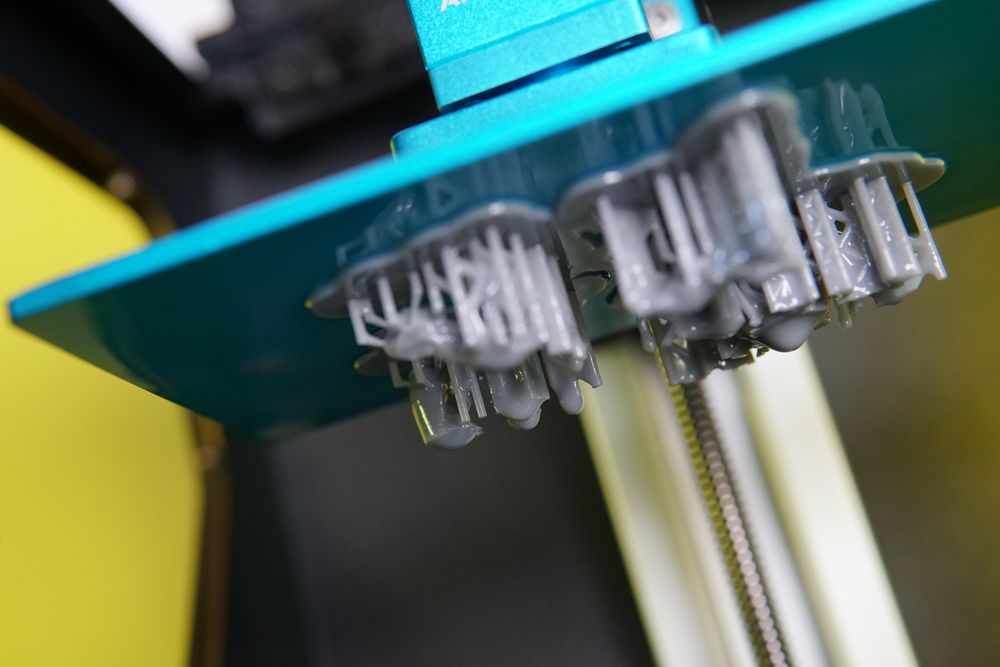
SLA vs. DLP: How Do They Work?
SLA and DLP are similar 3D printing processes that involve exposing a photosensitive resin to light, curing, and some post-processing steps.
Stereolithography
Stereolithography is a raster scanning process, where a laser is scanned over a wet bath of thermosetting resin to form a layer of hardened material. A platform inside the resin bath moves downwards by one layer thickness, and the laser scans over the material again to form the next layer. As this process continues, a part builds up from the hardened resin. Recently the SLA printing process has evolved, and desktop SLA printing is available. It uses the same concept, but the laser shines on the bottom of the resin bath, and the build platform raises the part from the bath.

Post-processing steps involve cleaning excess uncured resin from the printed part, either by immersing it in a solvent or an ultrasonic bath. After cleaning, the operator removes any printing supports from the part. Finally, the cleaned part is heated and exposed to UV light for final curing. This last step completes the material’s polymerization, giving a finished product with the desired material properties and geometry.
Digital Light Processing
DLP is very similar in that it also involves exposing a bath of photosensitive resin, and a support platform moves as the part is exposed and hardens. An entire layer of material exposes through a projection screen, curing a whole layer of material in a single deposition step. Once a layer exposes to light, the build platform pulls the hardened resin material vertically exposing the next layer.
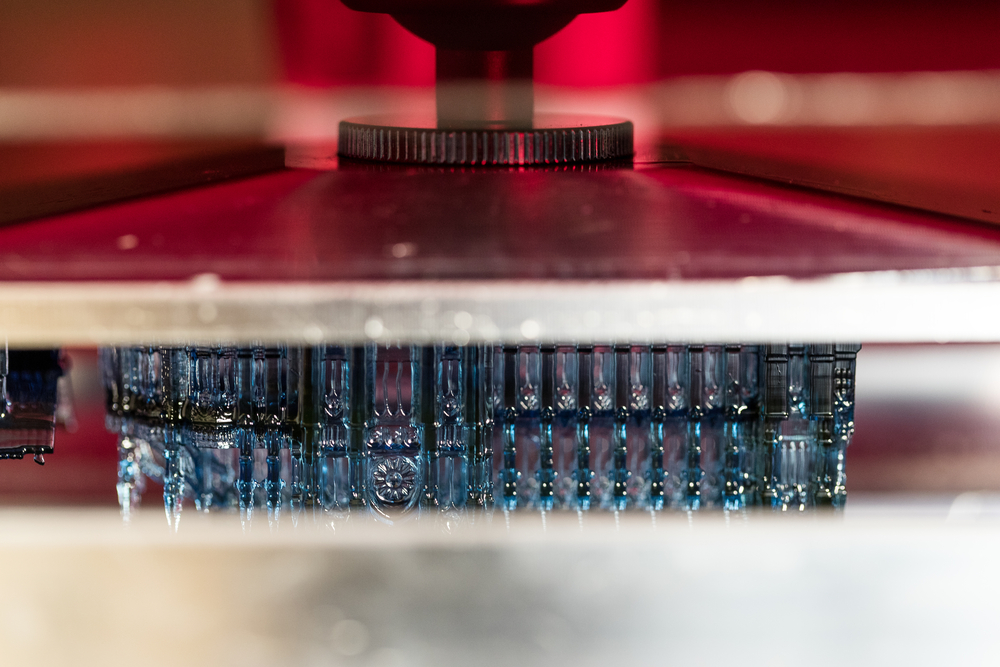
DLP requires some post-processing steps similar to those used in SLA. The printed product is removed from the build platform and rinsed to remove excess resin. A final curing step with UV light polymerizes the material and completes the DLP process.
Comparison
There are six high-level areas of characteristic comparison for SLA vs. DLP 3D printing:
| DLP | SLA | |
| Resolution | In the past, SLA beat DLP in terms of resolution, but higher resolution projection technology makes DLP comparable to SLA. | |
| Build Volume | Build volumes have a small aspect ratio, which enables wide-area printing. | The tracing operation limits the build area, but the build volume is scalable. |
| Surface Finish | DLP printers can produce features as fine as .05 mm. | A laser traces outside contours giving excellent detail. The size of the laser spot determines the minimum feature size. This size is in the range of .03 mm to .15 mm. |
| Accuracy | Both processes have the highest deposition accuracy among 3D printing processes. | |
| Speed | DLP cures an entire layer at once, eliminating the time needed to scan the part’s interior as seen in SLA printing. More parts in a batch do not take more time. | The high-resolution laser point that creates the fine exterior faces now becomes the limiting factor in curing the interior fill areas. More parts in a batch take more time. |
| End-to-end Workflow (including post-processing) | Advanced DLP solutions are now reducing post-processing workflow steps. | Continues to require significant post-processing steps to achieve clarity and smooth surfaces. |
| Raw material requirements | Bottom-up DLP printers can print two-part resins in continuous production environments. Bottom-up requires a small volume of material because the part raises out of a small bath. | Requires a large volume of material because the part lowers into the resin bath. Large baths are expensive to fill with resin completely. |
DLP is the right choice for printing large-volume parts with surface features larger than .1 mm. The DLP technology limits the build area, but newer projectors in advanced printers provide large print areas with high resolution. SLA is an excellent choice for printing many small, intricate parts at once or for a single large part with intricate surface detail.
SLA and DLP both require a resin that has a photoinitiator in them. The photoinitiator activates by the light of the laser or projector. As the photoinitiator works, the resin hardens in a process called cross-linking. Because SLA can create cores for investment casting, automotive and aerospace industries use it for complex parts. For products like dental implants and footwear, DLP is the best choice for high-throughput and resolution. DLP is also a better choice for elastic materials required in footwear.
Choosing the Right Process for Your Product
The best 3D printing technology partner can help companies determine the best materials, processes, and design modifications to ensure high yield in 3D printing runs. The best 3D printing technology companies can enable a flexible, on-demand manufacturing option for companies that do not want to bring 3D printers in-house.
Today’s best 3D printing service bureaus can supply advanced DLP 3D printers for in-house production, or they can provide contract 3D printing services through a cloud-connected smart factory. Going the latter route is an excellent choice for companies that want the flexibility of a scalable process for unique products without up-front CAPEX and tooling expenses. Smart factories provide a low-risk, on-demand option for rapid prototyping or volume manufacturing for many products.
LuxCreo’s patented LEAP™ (Light Enabled Additive Production) process is the ideal 3D printing process to help you scale. We offer cloud-connected 3D printers, high-performance materials, and on-demand Smart Factory production service in rapid prototyping applications. For more information on how our services can improve your supply chain and manufacturing processes, visit our contact page or call (650) 336-0888.
Subscribe to Our Newsletter
Be the first to get our latest updates and free trials!
Popular Resources
Follow Us
Featured Products
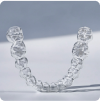
4D Aligner™
First Smart ActiveMemory™
Aligner
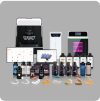
iLux Pro Dental Solution
Ultimate 1-Click Dental
Application Solution

LuxCloud Dental
Your One-stop Digital Dentistry
Platform
